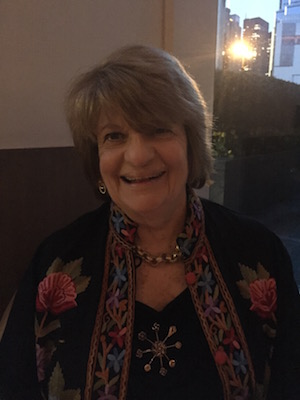Twins, Triplets and College Decisions
- Details
- Written by: Josie Blatt
- Hits: 12711
 The college admissions process is stressful for everyone, but it can bring new layers of tension to familial relationships for twins, triplets, and other multiples.
The college admissions process is stressful for everyone, but it can bring new layers of tension to familial relationships for twins, triplets, and other multiples.
Some twins can't imagine being separated; they have gone through everything in life together and want to continue to do so. For these twins, conflict can arise when they try to agree on a single school. Other twins view college as an opportunity to finally be seen as individuals, rather than part of a pair. For them, conflict can arise if there is overlapping interest in certain schools. After all, having been raised in the same environment, and having similar DNA, can often result in twins being attracted to the same types of colleges.
My sister Louisa and I are the latter kind of twins.  Although we are very close, there was no question that we wanted to attend different colleges. Louisa and I participate in many of the same activities such as Speech & Debate and various singing groups. We like doing the same things, but we dislike being compared to or competing with each other. When one of us does better at a Speech tournament, or gets into a musical group that the other doesn't, it stings. We want to be treated the same as any other two students in our class. We try our best not to share our grades and test scores, but living in the same house we often can't help but overhear things that automatically cause us to compare ourselves. Socially, being a twin also brings added layers of stress. Louisa and I have many of the same friends, but naturally some of our friends are closer with her while others are closer with me. This can lead to awkward situations when certain friends want to plan activities with only one of us. Overall, socially, academically, and competitively we want to avoid the tension in college that being a twin can bring.
Although we are very close, there was no question that we wanted to attend different colleges. Louisa and I participate in many of the same activities such as Speech & Debate and various singing groups. We like doing the same things, but we dislike being compared to or competing with each other. When one of us does better at a Speech tournament, or gets into a musical group that the other doesn't, it stings. We want to be treated the same as any other two students in our class. We try our best not to share our grades and test scores, but living in the same house we often can't help but overhear things that automatically cause us to compare ourselves. Socially, being a twin also brings added layers of stress. Louisa and I have many of the same friends, but naturally some of our friends are closer with her while others are closer with me. This can lead to awkward situations when certain friends want to plan activities with only one of us. Overall, socially, academically, and competitively we want to avoid the tension in college that being a twin can bring.
We also wanted to be treated as individuals in the admissions process. Neither of us wanted to be rejected, or even accepted to a school because of our sister's accomplishments or lack thereof. Additionally, we have spent our entire lives together, and we know that even if we went to the same college, chances are we would not live together after college. So we decided that we wanted our first experience living apart to be in the nurturing environment of a small college, rather than being thrust into the "real world" where we would suddenly learn how to live without each other. However, we were both interested in small, suburban and rural liberal arts schools in the Northeast. Certain schools that we visited only appealed to one of us. For example, Louisa was interested in women's colleges, and I was not. However, we went on almost every college tour together, and thus visited more than 30 schools in total. Since we knew we did not want to go to the same place, it was difficult to admit when we both really liked one school. There was one school that we were both interested in possibly applying early decision to, up until September. Neither of us ended up deciding to apply E.D. there, because we were more taken with other schools when we went back to revisit a few of our favorites.
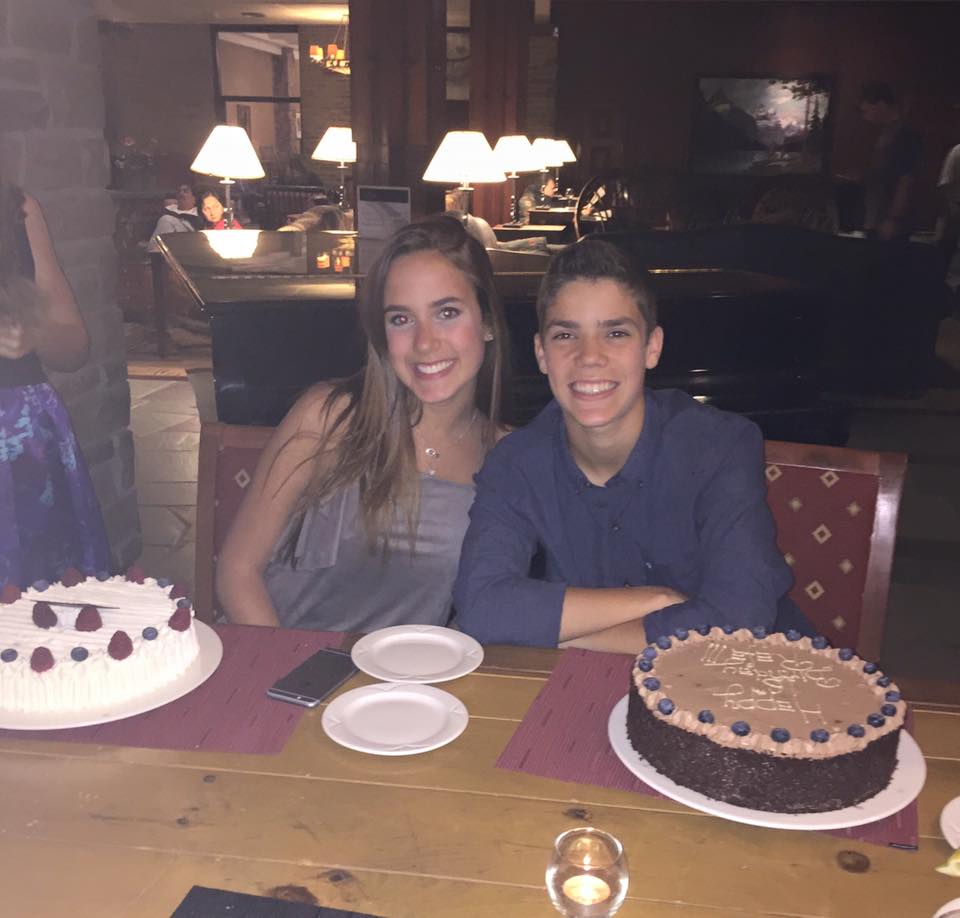 Fortunately, we both got into our top choice schools, where we applied Early Decision. I will be attending Hamilton College and Louisa will be attending Smith College. We know it will be difficult to adjust to living apart; after all we have never spent more than a few days in our life away from each other, but we know we will still talk every day. We are confident that we made the right decision for us. Louisa and I would advise twins who want to attend different colleges to be honest and open with each other about your opinions on various schools, it's better to say what you feel now and get into an argument, than to regret not speaking up about something and end up at a school where you didn't want to go, just because you were trying to protect your twin's feelings. I would also advise twins beginning the college admissions process to individually discuss your concerns with your high school deans. It can be quite refreshing to get an opinion from someone outside of your family.
Fortunately, we both got into our top choice schools, where we applied Early Decision. I will be attending Hamilton College and Louisa will be attending Smith College. We know it will be difficult to adjust to living apart; after all we have never spent more than a few days in our life away from each other, but we know we will still talk every day. We are confident that we made the right decision for us. Louisa and I would advise twins who want to attend different colleges to be honest and open with each other about your opinions on various schools, it's better to say what you feel now and get into an argument, than to regret not speaking up about something and end up at a school where you didn't want to go, just because you were trying to protect your twin's feelings. I would also advise twins beginning the college admissions process to individually discuss your concerns with your high school deans. It can be quite refreshing to get an opinion from someone outside of your family.
 In terms of policies on accepting twins, surprisingly few colleges have them. Most schools treat twins on a case by case basis. For example, if a pair of twins have radically different grades, test scores, and participation in extracurricular activities, most schools will be inclined to treat them as individuals, and may have to reject one and accept the other. But if a pair of twins have similar records, colleges will typically be inclined to reject or accept them both. A 2008 New York Times Article titled "Is There a Better Half?" quotes William R. Fitzsimmons, the Dean of Admissions and Financial Aid at Harvard, "One of the great urban legends is that we have quotas for a particular school or state, such that with twins or triplets we might accept one but not the other. If truly the candidates are equally qualified, the decision would be the same for both." An article in Psychology Today notes that some schools, such as the University of Maryland, the University of Texas, Rice University and the Massachusetts Institute of Technology, consider twins individually. Duke University is one school that asks applicants if they are twins or triplets, and if so, whether their siblings are also applying. Some of this is for logistical reasons, such as preventing one twin's application from being placed in another twin's file, which can happen because of similar names and email addresses. Duke also wants to prevent a minor difference in applications that might cause one of two unrelated students to be rejected, from causing one of two twins to be rejected.
In terms of policies on accepting twins, surprisingly few colleges have them. Most schools treat twins on a case by case basis. For example, if a pair of twins have radically different grades, test scores, and participation in extracurricular activities, most schools will be inclined to treat them as individuals, and may have to reject one and accept the other. But if a pair of twins have similar records, colleges will typically be inclined to reject or accept them both. A 2008 New York Times Article titled "Is There a Better Half?" quotes William R. Fitzsimmons, the Dean of Admissions and Financial Aid at Harvard, "One of the great urban legends is that we have quotas for a particular school or state, such that with twins or triplets we might accept one but not the other. If truly the candidates are equally qualified, the decision would be the same for both." An article in Psychology Today notes that some schools, such as the University of Maryland, the University of Texas, Rice University and the Massachusetts Institute of Technology, consider twins individually. Duke University is one school that asks applicants if they are twins or triplets, and if so, whether their siblings are also applying. Some of this is for logistical reasons, such as preventing one twin's application from being placed in another twin's file, which can happen because of similar names and email addresses. Duke also wants to prevent a minor difference in applications that might cause one of two unrelated students to be rejected, from causing one of two twins to be rejected.
Financially, sending twins and other multiples to college  can put an immense stress on a family. Fortunately, the federal financial aid formula used by the Free Application for Federal Student Aid (FAFSA) favors families where multiple children are enrolled in college at the same time. And the CSS/Financial Aid Profile form also reduces the Expected Family Contribution (EFC) when there are two or more children enrolled in college simultaneously.
can put an immense stress on a family. Fortunately, the federal financial aid formula used by the Free Application for Federal Student Aid (FAFSA) favors families where multiple children are enrolled in college at the same time. And the CSS/Financial Aid Profile form also reduces the Expected Family Contribution (EFC) when there are two or more children enrolled in college simultaneously.
There is no one way that twins and triplets experience the college admissions process, something that is evident when hearing from several sets of twins who are current seniors or alumni of Scarsdale High School.
The initial question of "Should we go to the same college?" is not black and white. For some twins it is clear that they must either separate or stay together. Gabi Schott SHS '17 described the experience of her and her twin brother Raf: "I don't think going to the same school was ever an option, because as much as I loved having a twin throughout high school, I wanted to go my own way and have my own experiences. And I know he did too." Gabi will be attending Cornell University, and Raf will be attending Colgate University.
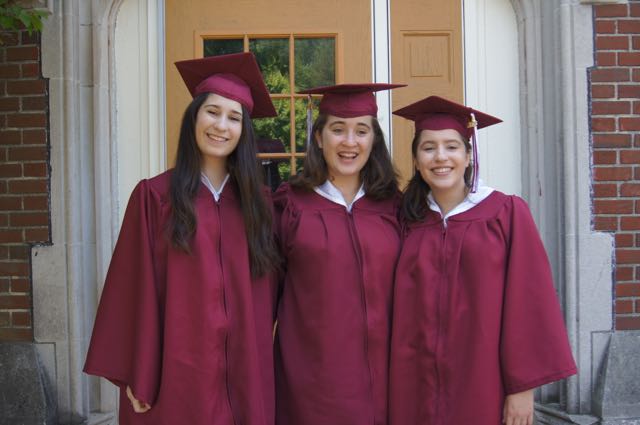 Current freshman in college and SHS '16 triplets Rachel, Abby, and Naomi Haber also knew they would separate because of their varying academic interests. Abby stated, "It would have been difficult if not impossible to find a school that accommodated all of our interests and passions. Therefore, we each chose schools that have offerings in our unique areas of interest." Abby is studying comparative literature and international relations at Brown University, Rachel goes to the Blair School of Music at Vanderbilt and is double majoring in viola performance and cognitive studies, and Naomi attends the Agriculture school at Cornell, studying environmental sciences on a pre-vet track.
Current freshman in college and SHS '16 triplets Rachel, Abby, and Naomi Haber also knew they would separate because of their varying academic interests. Abby stated, "It would have been difficult if not impossible to find a school that accommodated all of our interests and passions. Therefore, we each chose schools that have offerings in our unique areas of interest." Abby is studying comparative literature and international relations at Brown University, Rachel goes to the Blair School of Music at Vanderbilt and is double majoring in viola performance and cognitive studies, and Naomi attends the Agriculture school at Cornell, studying environmental sciences on a pre-vet track.
On the other side, Pammy and Cammy Sharlach SHS '17 knew that staying together was essential for them: "Even when we were little we knew we wanted to go to college together. We want to go together because only seeing each other on breaks was not enough for us", they said. Pammy and Cammy will start at Binghamton University in the fall.
Although the choice is clear to some twins, for others the question of going to the same school or not is not a major factor in deciding where to apply. Christina Siekierski SHS '17 explains about her and her sister Carolina, "Choosing our top choice was not a joint decision. After lots of visits and research, we just both happened to have the same top choice. I think it's because we grew up sharing so many things and the things we like and value just happen to be similar." Christina and Carolina will attend Colgate University in the fall.
Emily and Marc Chase SHS '17 agree, "We didn't purposely choose different schools, it just worked out that way." Emily will be attending Cornell University, and Marc has been accepted to several schools but does not yet know where he will be next year.
Some twins may experience conflict knowing that they want to separate or stay together, but struggling to either agree on a school, or select different schools. Carine and Colette Torres, SHS '14 and Duke University '18, experienced this. Carine said, "We actually intended on going to different schools, as we were definitely seeking to diverge; however, come May 1st, it ended up that we both independently decided on Duke." Colette added, "I, in fact, came very close to choosing another school that I had been deciding between with Duke, (for other reasons, too, but one of them being) to intentionally go to a different one." Colette and Carine are both studying computer science.
 The Siekierski twins and the Sharlach twins will both be attending the same colleges, but have differing opinions on how they wanted their applications to be viewed. Christina Siekierski said, and Carolina agreed, "I think it is very important the college applications be looked at individually. Just because a person is born a twin, doesn't mean that should be defined by that. Each individual has different interests, accomplishments, and passions that should be evaluated individually." Pammy and Cammy Sharlach had the opposing viewpoint and said, "Although we are both individual people we prefer the both or none policy."
The Siekierski twins and the Sharlach twins will both be attending the same colleges, but have differing opinions on how they wanted their applications to be viewed. Christina Siekierski said, and Carolina agreed, "I think it is very important the college applications be looked at individually. Just because a person is born a twin, doesn't mean that should be defined by that. Each individual has different interests, accomplishments, and passions that should be evaluated individually." Pammy and Cammy Sharlach had the opposing viewpoint and said, "Although we are both individual people we prefer the both or none policy."
Each set of twins and triplets going through the college admissions process, experiences hardships unique to their situations. Gabi Schott said that one of the most challenging things about the process is the added pressure of parents saying, "Well Raf did this many essays, so how come you didn't." Carolina Siekierski mentioned, "It's annoying constantly being questioned, even by complete strangers. Do you wanna go to the same school? Are you gonna room together? What if one gets in and the other doesn't?"
One source of conflict that the Haber triplets encountered was the added stress of early decision admissions. Naomi Haber discussed the difficult experience of not being admitted to her early decision school, while her sisters were. Naomi said, "Throughout my childhood I had always struggled with being compared to my sisters: academically, athletically, socially, artistically, etc. When my sisters were both accepted early, I felt as though I had lost a race. This unhealthy and unproductive mindset was undeniably distorted. However, it also pushed me to become a better version of myself."
Naomi also recalled an unfortunate memory, "I was walking to homeroom one day when a girl in the grade below approached me. She congratulated me on my sisters' acceptances and said in a pitiful voice, 'Oh, but you were not accepted, right? Well, that must suck.' She then proceeded to say something along the lines of, 'Wow! They are very smart. Meanwhile, you have not gotten in anywhere.' I felt inferior as though I had somehow failed," continued Naomi. Her sister Rachel said of the situation, "I would have traded places with her in an instant."
Naomi reflected that her deferral (She was eventually accepted to her Early Decision school.) became a positive because, while she did not apply E.D. to Cornell, her deferral led her to pay more attention to Cornell, her eventual selection. She said, "By the time I was ultimately accepted into my early decision application school, I had realized that Cornell was a better fit for me. Because I was accepted there as an R.D. applicant, by contract I was no longer bound to the rules of E.D."
While clearly being a multiple brings added challenges to the admissions process for many, it doesn't have to for all twins. Marc and Emily Chase said they didn't experience many added difficulties: "Being twins really didn't affect the process for us. We acted as separate entities," said Marc and Emily.
There are also unique struggles and benefits of being a multiple once you begin college. Colette Torres discussed the worst parts of attending the same college as her twin sister: "It's the perpetual inescapable feeling that you can't be your own person. I think it's often hard for people to grasp that we want to have separate identities because there are a lot of assumptions made just from the fact that we go to the same school and have chosen the same major and lead very parallel lives in college." Carine added, "It's also frustrating that if we make the same decision, for example, we often choose the same electives for our major, it's not that we've made that decision together, but inevitably, there is often a 'smartest' or 'best' decision."
Abby Haber discussed the difficulty of being away from her sisters: "It's harder, and not as satisfying, to call or Skype them rather than walk ten feet to their bedroom. It is hard not to have Rachel and Naomi as consistently with me anymore because their company, advice, humor, and friendship have always (and continue to) mean so much to me." Rachel added, "When I first got to Vanderbilt, I had a really hard time adjusting to the fact I wasn't living with my sisters. I was used to them always being there when I got home, talking to them casually about what happened that day or just seeing them for a bit. It was really weird not having that initially, but I have made some amazing friends here that certainly haven't replaced them, but have helped me adjust. I know that all three of us will be close no matter what." The Haber triplets see each other approximately every three months.
The Torres twins reflected on some of the best parts of attending the same college. Colette Torres said, "In the beginning, it was super helpful because as a freshman, it often feels like no one can understand exactly what you're going through, but we were living through the same thing." Colette and Carine often wonder about what going to different schools would be like, and sometimes even wish they had more separate experiences, but are ultimately happy with their decision. Carine explained, "I definitely wish we had the experience of being in different schools; however, I don't regret going to Duke at all and if it means we had to go to the same school for me to get the experience I've had at Duke (and I think she feels the same way), I don't wish I had picked a different school."
The Haber triplets agree that independence is the best aspect of their lives at different colleges. Naomi said, "The best part about going to different schools is that it provides me with a greater sense of freedom which was difficult to achieve, as another 'Haber triplet,' throughout my childhood. I am seen as an individual, without comparison."
Many of the twins I spoke with had advice for other twins going through the college admissions process. Gabi Schott advises, "Help each other because you have the unique experience of going through this with someone else!" Carine Torres said, "Don't focus on being X's twin. Just focus on whatever you need to do for yourself exclusive of that fact." Pammy and Cammy Sharlach said, "Don't make it a competition. Be supportive of each other throughout the process." They added, "Another piece of advice is don't room with each other. It's good to branch out and meet different people and give yourselves a little space." The Torres twins agree that rooming together at the same college isn't a great idea. Emily and Marc Chase advise, "Support each other throughout the process but don't get so caught up in the other person's business and feelings."
Overall, the process is different for each set of twins, so if you are twins beginning the college search, do whatever you need to do to make the process the least stressful it can be. Moreover, if you are not a twin, understand when discussing the college admissions process with people who are twins, that just because people share DNA, they are individual people.
SBNC Announces Election Results
- Details
- Written by: Joanne Wallenstein
- Hits: 4884
 On Tuesday night January 10, the SBNC Administrative Committee announced that ten candidates have been elected to join the School Board Nominating Committee.
On Tuesday night January 10, the SBNC Administrative Committee announced that ten candidates have been elected to join the School Board Nominating Committee.
The following candidates were elected:
Edgewood: Felicia Block and Elizabeth Massey
Fox Meadow: Katherine Cutlip and Susanne Vleck
Greenacres: Mitchell Kahn and Amy Lewis
Heathcote: Lawrence Patrizio and Sanford Plachter
Quaker Ridge: Colleen Brown and Cindy Iver
A total of 355 votes were cast in the election, of which 75 were absentee ballots.
Here is the breakdown of votes cast by neighborhood:
Edgewood: 39
Fox Meadow: 107
GreenAcres: 115
Heathcote: 20
Quaker Ridge: 74
This year's new members will join the existing 20 members of the committee, serving staggered three-year terms. The committee will have its first meeting on January 29 and by the end of March it will nominate two candidates for the Scarsdale Board of Education to fill the seats currently held by Scott Silberfein and Christopher Morin. Both Silberfein and Morin are completing their first three-year terms and are eligible for re-nomination. All Scarsdale residents are welcome to propose Board of Education candidates to the SBNC. The SBNC Board of Education candidates, along with any other candidates who may choose to run, will stand for public election in May at the same time as the school budget vote.
Five Scarsdale Students Recognized in the Regeneron Science Talent Search
- Details
- Written by: Joanne Wallenstein
- Hits: 8582
 Five Scarsdale students were named scholars in the 2017 Regeneron Science Talent Search (formerly the Intel Science Competition) on January 4, 2017. The students were among 300 scholars who were selected from more than 1,700 entrants on the basis "of their exceptional scientific promise, excellent academic record and outstanding recommendations from teachers."
Five Scarsdale students were named scholars in the 2017 Regeneron Science Talent Search (formerly the Intel Science Competition) on January 4, 2017. The students were among 300 scholars who were selected from more than 1,700 entrants on the basis "of their exceptional scientific promise, excellent academic record and outstanding recommendations from teachers."
This is Regeneron's first year of sponsorship and they have doubled the monetary awards. Each of the 300 scholars will receive $2,000 with an additional $2,000 granted to their schools. On January 24th, 40 students from the 300 scholars will be selected for an all-expense paid trip to Washington D.C. during which they will interact with leading scientists and present their research and compete for $1.8 million in awards, including a top award of $250,000.
Commenting on the news, Scarsdale High School's Lauren Singer said, "I feel honored to be selected as a Regeneron STS semifinalist and very grateful to my science research teachers at SHS--Mr. Szerlip, Ms. Estersohn, Mr. Prendergast, Ms. Pisano, and Ms. Schoenbrun--and to my mentors at the Seaver Autism Center at Mount Sinai Hospital."
"The goal of my research is to find a biomarker that can diagnose autism during infancy. Right now, diagnoses are made based on behavioral observations at around 2 years old. Earlier diagnosis is critical because early intervention is highly effective in helping children with autism gain valuable skills. My project used a non-invasive EEG-based technique called transient visual evoked potential (tVEP) to examine excitatory and inhibitory neural signaling in the brains of typically-developing children, children with autism, and children with a subtype of autism called Phelan-McDermid Syndrome. We found differences in the childrens' brain signaling patterns and we think these may become the basis of a novel biomarker."
"I became interested in autism research because my older sister Jodie has autism."
Dexin Li said, "I was incredibly surprised and honored to be named a Regeneron Scholar--I still can barely believe it! I still have to keep in mind, though, that the other students in the science research program as well as I worked extremely hard these past three years because we wanted to learn from the grueling process of science research and not solely for these awards. We've all learned so much, so we are all winners, with or without awards like these!"
Here is a description of her research:
Making use of a quite unusual field and set of data, this research investigates particular risk-taking strategies used in the game of chess and interprets why those strategies are chosen in certain scenarios and across genders. In an analysis of a chess dataset with 9999 games, players were found to incorrectly perceive low and high probabilities, which supports key decision-making principles. Previous explanations of gender differences attribute discrepancies in success to the more competitive and risk-seeking nature of men. This research provides novel evidence which questions previous research by showing that though men are more risk-seeking than women, risk-seeking does not always lead to greater success. Furthermore, men were found to incorrectly perceive probabilities more than women, suggesting that men are playing less rationally than women. Finally, this research provides a basis that promotes chess in future decision-making and gender difference research and offers ideas to decrease the gender gap.
Here are the names of the local student scholars:
Edgemont High School
Paskov, Alexander Spassimirov, age 17: New Frontiers in Toxicogenomics Based on Fused Regularization and Rank Restricted Machine Learning
Rozental, Stefano Freitas Andrade, age 17: Language Lateralization Using Electroencephalography
Wexler, Jocelyn Hallie, 17, age 17: Laparoscopic Roux-en-Y Gastric Bypass Versus Laparoscopic Sleeve Gastrectomy for the Resolution of Obesity-Related Comorbidities: A New Method of Comparison
Scarsdale High School
Li, Dexin, age 17, Decision-Making, Misperceptions, and Gender: Chess Players and How They Take Risks
Singer, Lauren Hallie, age 17: Transient Visual Evoked Potentials as a Novel Biomarker for Autism and Phelan-McDermid Syndrome
Work Begins on the Design Lab, Learning Commons and Fitness Center at SHS
- Details
- Written by: Carly Glickenhaus
- Hits: 6876
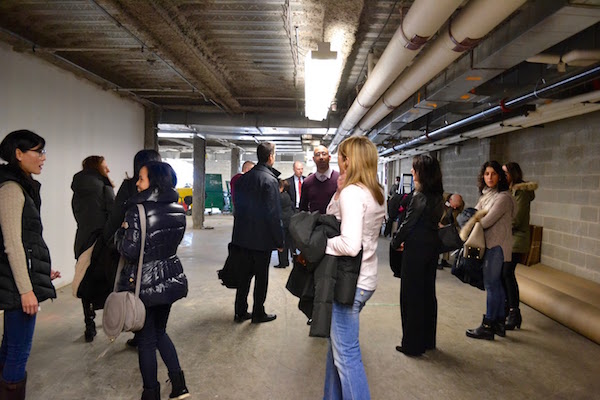 The district's vision of 21st century learning spaces to match Scarsdale's innovative teaching methods and curriculum, coupled with space needs from increased school enrollment culminated in Tuesday's ground-breaking ceremony for three new facilities at Scarsdale High School.
The district's vision of 21st century learning spaces to match Scarsdale's innovative teaching methods and curriculum, coupled with space needs from increased school enrollment culminated in Tuesday's ground-breaking ceremony for three new facilities at Scarsdale High School.
Superintendent of Schools Dr. Thomas Hagerman has been working on this project since his first day at Scarsdale Schools two and a half years ago. He noted that while the high school's facade is majestic and gothic, the inside has been neglected and learning spaces are inadequate. A new learning commons, design lab, and fitness center will make health and wellness a priority in a competitive and prestigious school district. Dr. Hagerman says the construction should be complete in time for the 2017-2018 school year.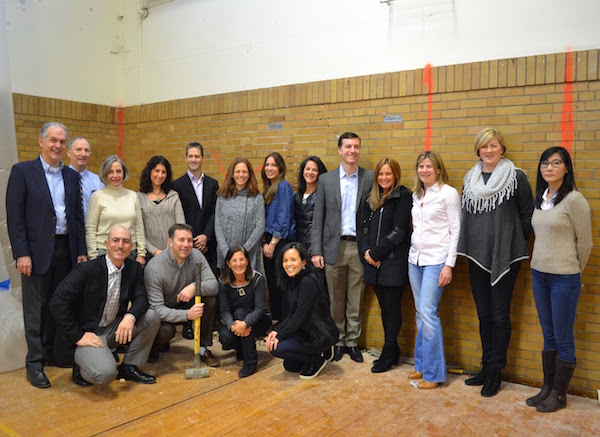
President of the Board of Education Leila Maude thanked the Scarsdale Schools Education Foundation for backing the design lab and fitness center, the Madoff family for making a generous donation in honor of their son Tyler, the building committee, the steering committee, and Maroon and White for their support which helped to make the new fitness center possible. Principal Ken Bonamo thanked residents who voted for bond referendum in 2014, since these projects are the final product of that bond plan. Mark Bezos, President of the Scarsdale Education Foundation, thanked friends and community members for putting their trust into the foundation in such a short amount of time. The foundation has raised more than $2 million, Bezos says, and they plan to raise even more in the coming months to ensure these projects run smoothly without budgeting obstacles.
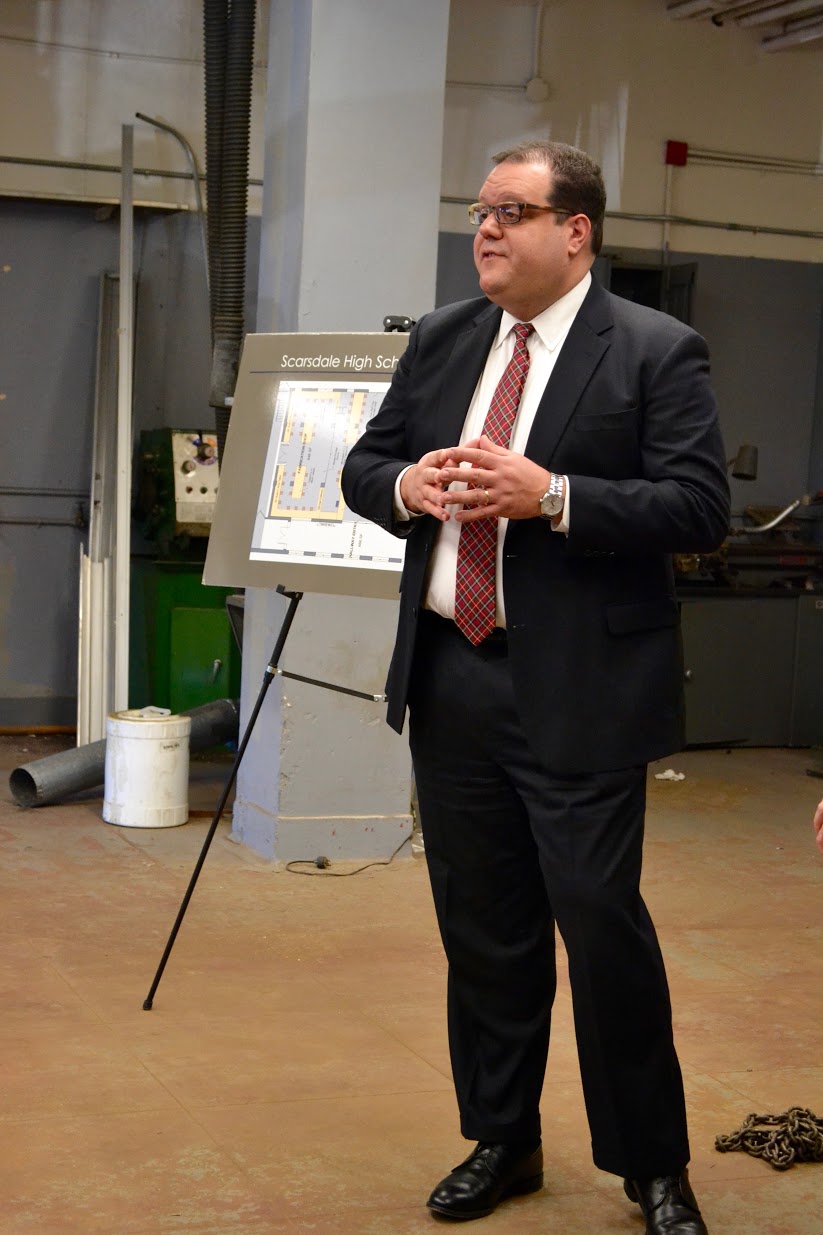 Each speaker emphasized that the goal of these massive undertakings is to inspire Scarsdale's children for generations to come. It is ironic that no students were present, the event was closed to the public, and I as a journalist was the youngest attendee by twenty years.
Each speaker emphasized that the goal of these massive undertakings is to inspire Scarsdale's children for generations to come. It is ironic that no students were present, the event was closed to the public, and I as a journalist was the youngest attendee by twenty years.
A new learning commons will take the place of Gyms A and B to offer more collaborative work space, along with new furniture and cafeteria facilities. Inside the gym, Dr. Hagerman noted the loud hum of the ancient radiator on the wall and expressed his excitement to see the space torn down to be replaced by a modern learning environment.
The new design lab will take the place of an auto repair shop that for years escaped notice, occupying the hidden inner depths of the building. The design lab will revolutionize Scarsdale's STEM curriculum and take advantage of building space that was collecting dust. New STEM classes at Scarsdale already have high enrollment. According to art teacher Lisa Yokana, this year the Intro to Engineering and Intro to Design and Fabrication classes have had to squeeze large numbers of students into a physics lab. These courses run two days a week to allow students to be gradually introduced to groundbreaking (pun indeed intended) fields of technology. The new facility will allow Yokana to expand the curriculum to new electives including 3D Printing and Design, Robotics, Design-Build, and Wearables and Physical Computing.
Yokana is also considering a third year capstone 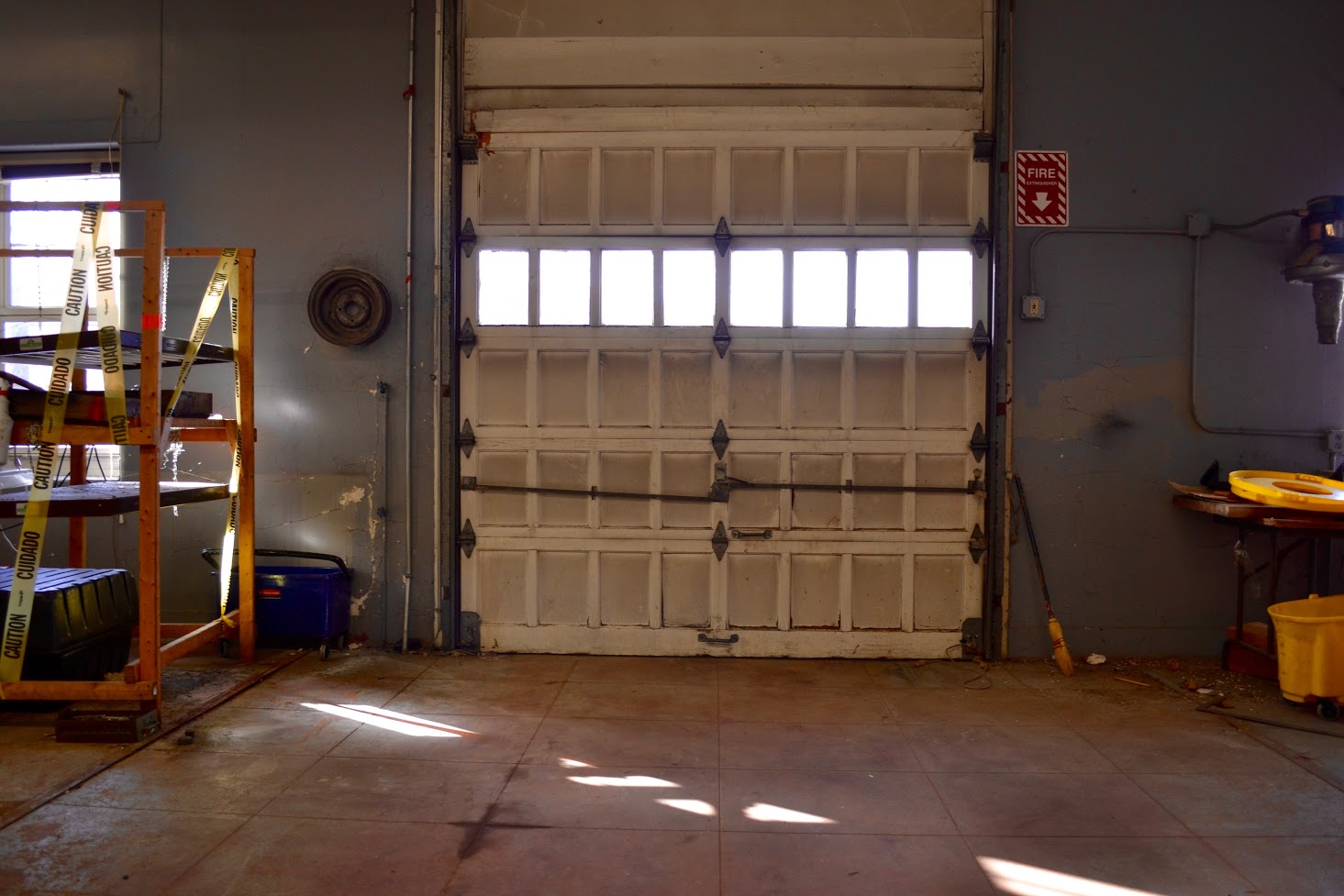 course in social entrepreneurship. Bonamo emphasized that the key take-away from the new STEM plans is that the courses appeal to broad spectrum of kids wherever their starting point in STEM may be. Access to engineering and design courses years before making college decisions gives Scarsdale students the advantage of early exposure to help them narrow down what they want to study.
course in social entrepreneurship. Bonamo emphasized that the key take-away from the new STEM plans is that the courses appeal to broad spectrum of kids wherever their starting point in STEM may be. Access to engineering and design courses years before making college decisions gives Scarsdale students the advantage of early exposure to help them narrow down what they want to study.
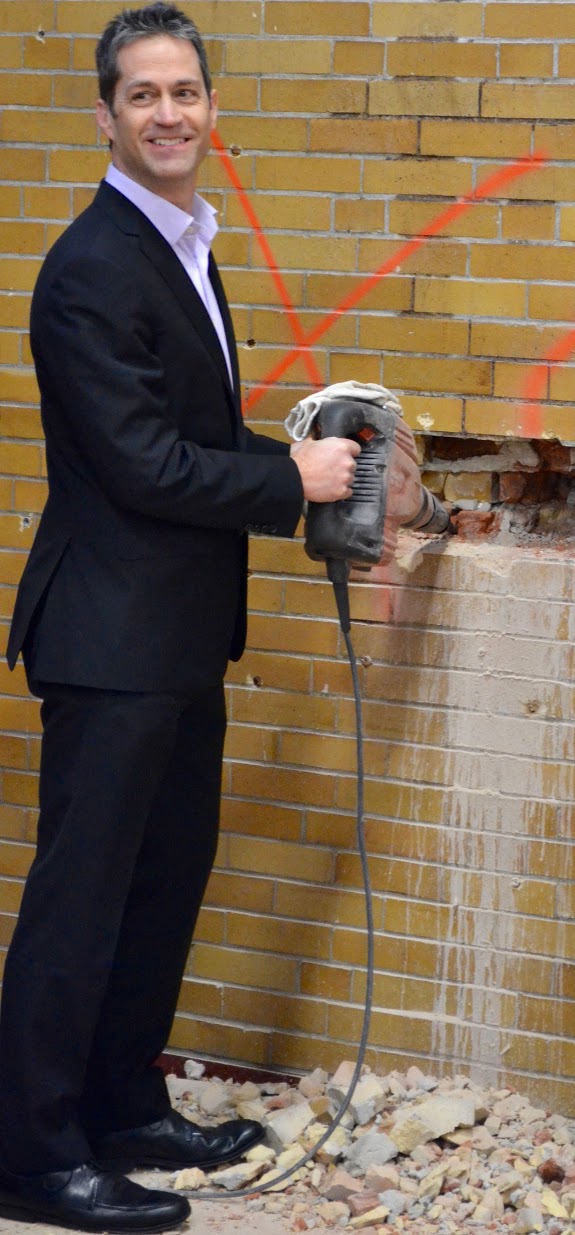 The current "fitness center" is a vestige of the 1980s, forcing many students to buy gym memberships elsewhere instead of using the school's facility. The space is dark, musty, poorly equipped, and uninviting. In total, the fitness center project will cost $1.6 million. The Board of Education contribution and the donation for fitness equipment accounts for $500,000 and $300,000, leaving $800,000 to be raised in the coming months. Offering a 6,200 square foot training center, the District is finally embracing its responsibility to promote fitness and healthy decision-making as a sustainable way of life for stressed, sleep-deprived students in a competitive academic environment. High school age students are particularly sensitive to body image, and this new space will provide an atmosphere where boys and girls, athletes and non-athletes, will be encouraged to exercise in a safe, pleasant, and convenient space.
The current "fitness center" is a vestige of the 1980s, forcing many students to buy gym memberships elsewhere instead of using the school's facility. The space is dark, musty, poorly equipped, and uninviting. In total, the fitness center project will cost $1.6 million. The Board of Education contribution and the donation for fitness equipment accounts for $500,000 and $300,000, leaving $800,000 to be raised in the coming months. Offering a 6,200 square foot training center, the District is finally embracing its responsibility to promote fitness and healthy decision-making as a sustainable way of life for stressed, sleep-deprived students in a competitive academic environment. High school age students are particularly sensitive to body image, and this new space will provide an atmosphere where boys and girls, athletes and non-athletes, will be encouraged to exercise in a safe, pleasant, and convenient space.
Nicole Roemer, Physical Education Department Chair, emphasized the importance of the mind-body connection in SHS students. One of the greatest gifts Scarsdale can bestow upon its graduates is an appreciation for the value of fitness as a coping mechanism for stress. As a teenager, it is easy to fall into a routine of caffeine dependence and sleep deprivation, developing poor habits that later plague academic success, athletic performance, social life, and healthy relationships in college. By incorporating cathartic activities like yoga into the physical education curriculum students participate in throughout the school day, SHS is taking a significant step in the continuing struggle to produce students that can balance it all.
The project proposal takes great care to emphasize that a "larger, more accessible fitness center is especially important to meet the needs of our female athletes." The old fitness center was used by a small minority of student-athletes so it is yet to be seen whether or not the new fitness center will be a comfortable environment for girls and non-athletes.
Ms. Roemer is working on building new coursework for the new space, including a Raiderfit course for high intensity interval training, and Principles of Modern Fitness I and II to teach students goal setting and individual program planning, seeking to create a more well-rounded fitness experience than Scarsdale has offered in the past. Group fitness classes, like yoga, step aerobics, and zumba will make gym classes more universally appealing, and promote self confidence so that students will leave after four years ready to manage their own fitness for their lifetime.
Athletic Director Ray Papplardi is excited to see the new training facility be used as a resource for the 60% of students who participate in athletics and as an asset for the Scarsdale Athletics program. He highlighted that there will be after school hours for all students, and he mentioned that the department would explore possibility of access for alumni as well.
Looking ahead, Dr. Hagerman noted that these projects represent only the beginning in Scarsdale's campaign for 21st century learning, and they are the first of many projects in the works on facilities across the school district.
Carly Glickenhaus, SHS '16, is a freshman Biology major at Georgetown University and a Division I Varsity Rower.
Culinary Jewels at the New Jewel of Himalaya
- Details
- Written by: Judie Dweck
- Hits: 9358

Nuru Sherpa came here as a teen. He worked  his way up in every aspect of the culinary field throughout the country. "My goal is to make people happy. I try to serve in the best way. If you prepare and serve food nicely from your heart, with love, people will appreciate it. Dining restores the whole body and you must relax and treat your body well. ." When asked whom he would like to serve he replied," I want to serve genuine human beings. The customer is most important," Nuru is a generous man. After the Nepal disaster he made donations to help rebuild the schools and hydro power facilities.
his way up in every aspect of the culinary field throughout the country. "My goal is to make people happy. I try to serve in the best way. If you prepare and serve food nicely from your heart, with love, people will appreciate it. Dining restores the whole body and you must relax and treat your body well. ." When asked whom he would like to serve he replied," I want to serve genuine human beings. The customer is most important," Nuru is a generous man. After the Nepal disaster he made donations to help rebuild the schools and hydro power facilities.
Influences of Chinese and Indian cooking are evident in the Himalayan cuisine. As we checked out the menu, we nibbled on complimentary papadam and chutney. A bamboo steamer arrived with assorted momo, traditional dumplings, homemade from dough to filling. I opted for the tomato, cilantro and fenugreek sauce but a cayenne infused hot sauce is offered, as well. I even got a lesson in how to eat the momo in the traditional way. We pick up the dumpling with our fingers and bite into the opposite corner. Pour some sauce into the opening and bite into this delicious treat. The vegetable, beef and chicken momo each had a distinctive shape and the thick dough paired well with the hearty fillings. You can also order them fried. Very tasty was sha phaley, an individual beef tart encrusted with flaky pastry. The rock shrimp appetizer arrived with many tail off small shrimp glazed and battered with a cornstarch and flour mix for a crisp golden result. A creative original appetizer was a crab cutlet. Mashed potato and crabmeat are mixed together and formed into two nice sized patties. It is Sherpa's own variation of a crab cake, and indeed very good. A variety of chilli with chicken, beef, lamb or pork are appetizers, as well. If you wish to begin your meal with soup, try the traditional thendup variety. My steaming bowl of thendup was thinly hand pulled homemade flat noodles, beef and fresh spinach in a rich beef broth. Thukpa with handmade noodles as well, Lentil soup and momo soup with dumplings are very popular, as well. As I write on a cold and rainy morning a bowl of thendup sounds very tempting. Several salads are available, as well. Himalayan salad with a ginger dressing was appealing.
For dessert, we enjoyed a traditional ras malai Rice pudding and galub jaman are similar to those of their Indian neighbors. I look forward to sampling the house made mango, pistachio, cashew and almond dairy free ice cream soon.
Worthy of note, at Jewel of Himalaya cleanliness is of utmost importance. They have a freezer free kitchen where everything is prepared daily.
Jewel of Himalaya
751 Central Park Avenue
Scarsdale, NY 10583
(914) 874-5506
CHICKEN KORMA (Serves 4)
1 and ½ pounds boneless skinless chicken breast in 1 inch cubes
1 tsp. diced fresh ginger
1 clove garlic, finely chopped
A pinch each of cumin, turmeric and cardamom
1 cinnamon stick
2 ounces cashew nuts
2 ounces almonds
Enough water to add to the nuts to blend to a puree
1 medium tomato, chopped
4 ounces chopped onion
Salt and pepper to taste
2 Tbsps. vegetable oil
For the garnish, extra nuts and cinnamon
Additional spices if desired
Place almonds, cashews and 2 ounces of onion with enough water into blender container to form a puree. Set the puree aside. Place oil in skillet and heat. Add the remaining 2 ounces of onion and stir until golden. Add garlic and ginger and stir. Add chicken, tomato, cumin, turmeric cardamom and cinnamon stick and stir well for 5 minutes. When the chicken is browned and the tomato is glazed, add the puree and cook for about 10 minutes. Add additional spice if you wish. Garnish with nuts and cinnamon and serve. Remember to remove the cinnamon stick.
